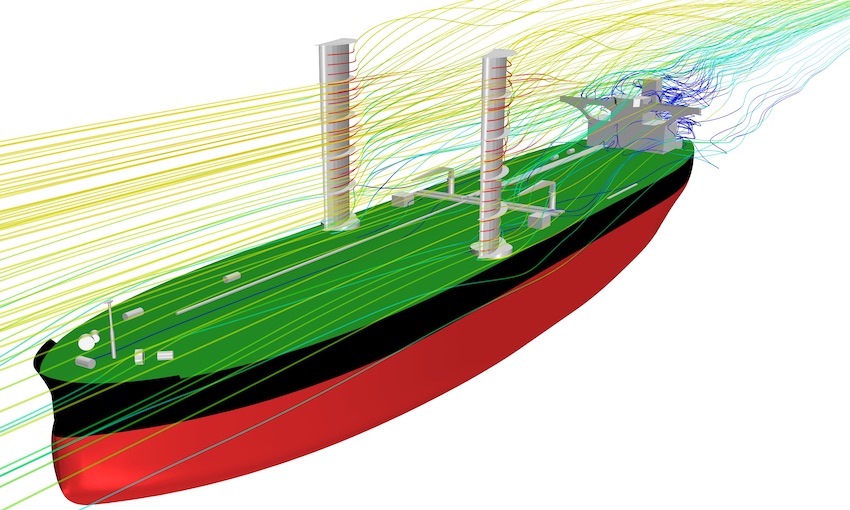REGISTRAR and classification society DNV GL has awarded an approval in principle to Korea Shipbuilding and Offshore Engineering for a wing-sail auxiliary propulsion system for ships – the result of a joint research project between KSOE and SK Shipping.
The wind-powered auxiliary propulsion system for ships is the result of a joint research project from KSOE, the shipbuilding holding company of Hyundai Heavy Industries Group, and SK Shipping, to develop wind-powered eco-friendly propulsion solutions.
“We are speeding up efforts to bring eco-friendly technologies to the market. The wing sail system will reduce fuel consumption by more than 6%. We will take the lead in the next-generation ship market and continue to strengthen our technological competitiveness,” said Hyunjoon Shin of KSOE.
“This is a promising technology that shows new possibilities for ship owners to be able to meet IMO standards for reducing carbon emissions.”
The wing sail design is 20 metres wide, 50 metres high and installed vertically on both sides of the deck. It rotates its wings according to the direction and intensity of the wind to provide auxiliary propulsion to the ship. The wing can be lowered to 10 metres in height, making it flexible in case of bad weather or when passing under a bridge.
DNV GL undertook the AIP by reviewing the initial drawings related to design loads, system responses, redundancies and components submitted by KSOE, while SK Shipping provided their expertise and insights on the technology from an owner’s point of view.
Vidar Dolonen, DNV GL regional manager Korea & Japan said, “As a result of the joint research with two leaders of Korea’s maritime cluster, it was a meaningful project to which we contributed our expertise.
“The wind propulsion for ships is an effective solution which helps meeting the IMO regulations for greener shipping. DNV GL is ready to deliver a wide range of related services for further projects.”
The new wing sail propulsion system can be installed on many types of vessels and is expected to further increase the efficiency of future ship operations.
The AIP is also a big step towards awarding a ship DNV GL’s new additional class notation, WAPS (Wind Assisted Propulsion System). In addition, DNV GL has recently developed a standard for the certification of wind assisted propulsion systems in response to enquiries for the independent assessment of those systems.

